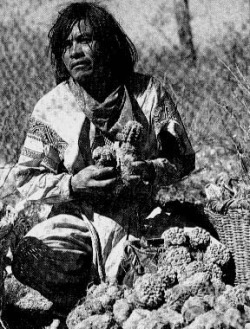Problems Native Americans Faced & Laws Passed To Help Native Americans
Title.

For years The Native American people fought not just for civil rights, but also for the right to been seen as equals here in the United States. During the early and mid-1950's many Native Americans were not able to enjoy the health, freedom, or wealth that other white Americans were enjoying during that time period. For those Native Americans who were able to find work there income was less than half of what other white Americans earned. As a result many were not able to provide for their families which lead to not enough food or clothing for many family members, who died of starvation and hypothermia during the winters as a result. Lack of income was not the only problem American Indians faced during that time, because many had no health care diseases such as tuberculosis and scarlet fever raged rampant in the Native community. Not being able to afford doctors or medicine for their children or themselves lead to infants and young adults dying at an early age. As the years passed by the problems the Native American community faced seemed to escalate, the little funding the Federal Government had provided for the Indian reservations was now completely cut off. This was due to the termination policy, which under the presidency of Dwight Eisenhower relocated close to over 200,000 Native Americans of their reservations into suburban America. The hope was to better assimilate the Native community into American society while guiding them on the path to become American citizens. However the plan failed drastically and many Natives found themselves worse off then before, this was because there had been a lack in basic funding from the government for programs to better help the transition of Native Americans into modern American culture. In 1973 after the siege at Wounded Knee, South Dakota there began to be a small sign of hope for many Native Americans as laws were passed to ensure them equal civil rights, laws such as:
- The Indian Education Act (1972) : This act made sure that there were American Indian cultural programs and classes provided for Native American students on campus.
- Indian Self-Determination and Assistance Act (1975) : With the the help of the much needed government funding tribes were now able to impose and create their own programs to provide health care for the sick and working, housing benefits, and much needed education for students.
- Indian Child Welfare Act (1978) : The Government now allowed Native American Children to be adopted by relatives and other tribe members before giving them up to a white family.
